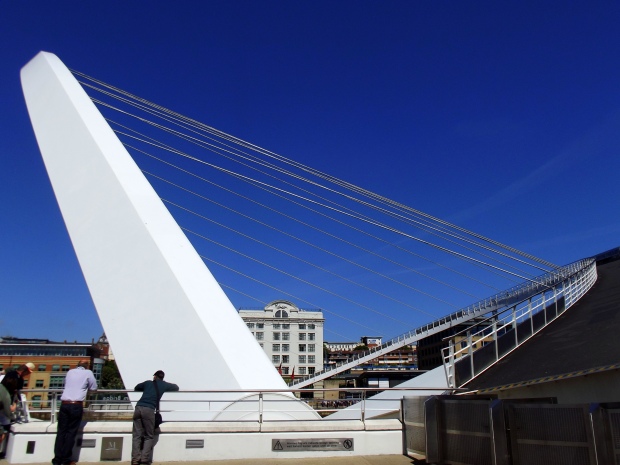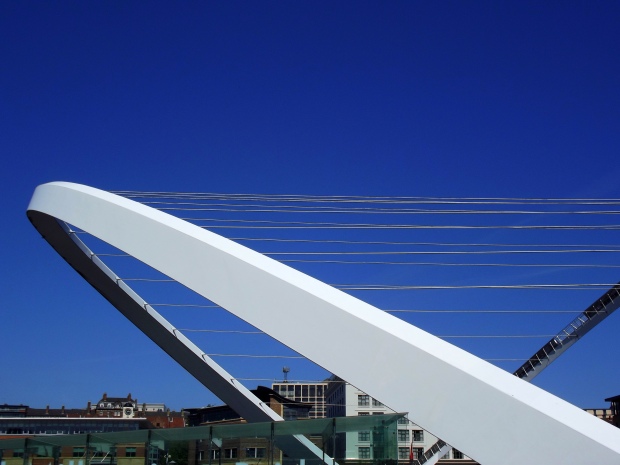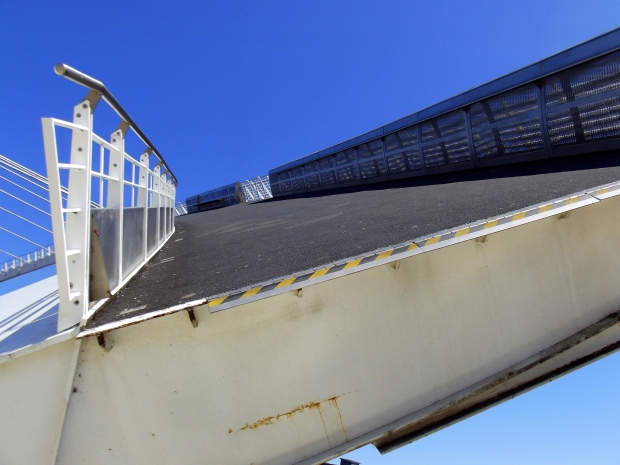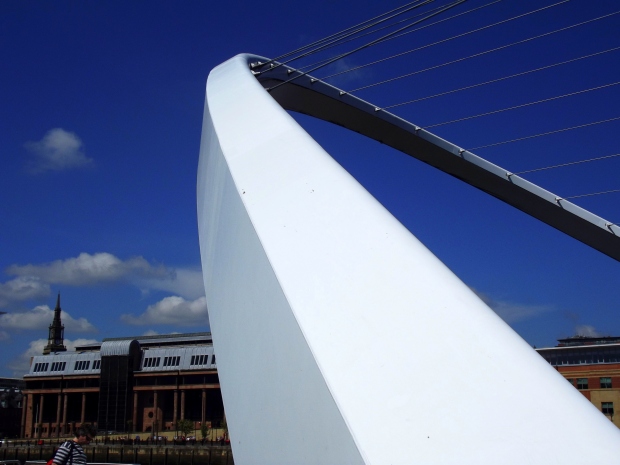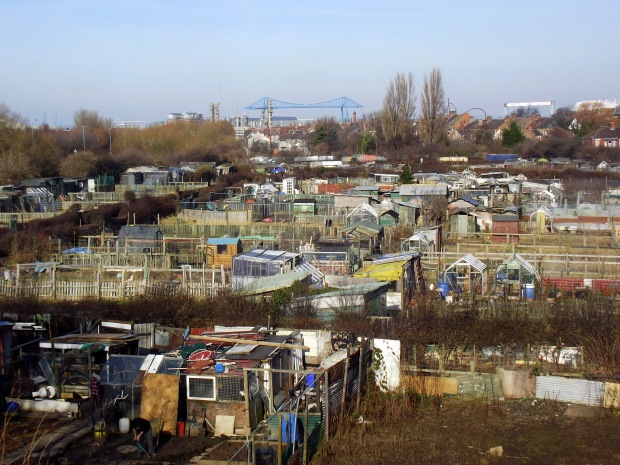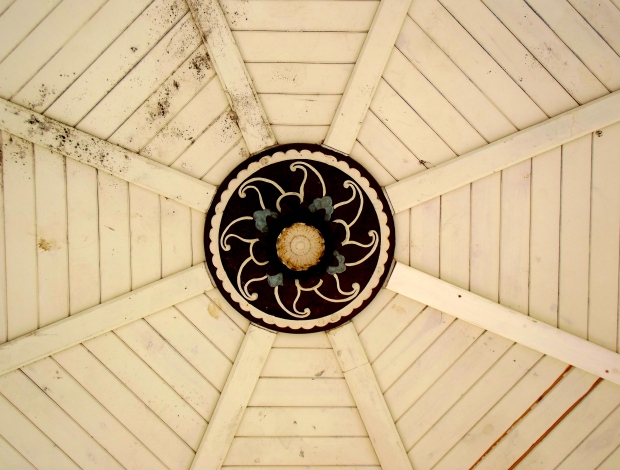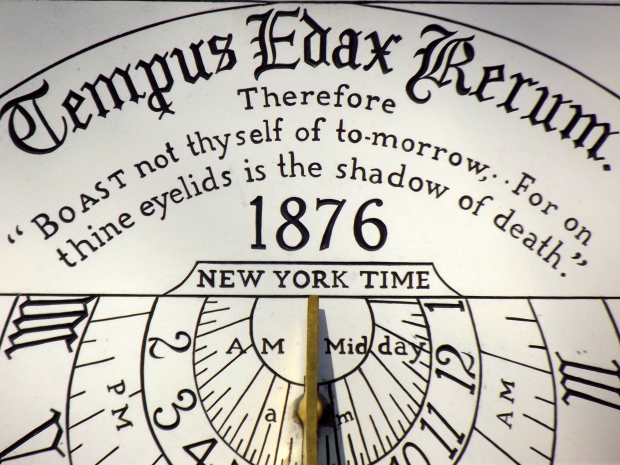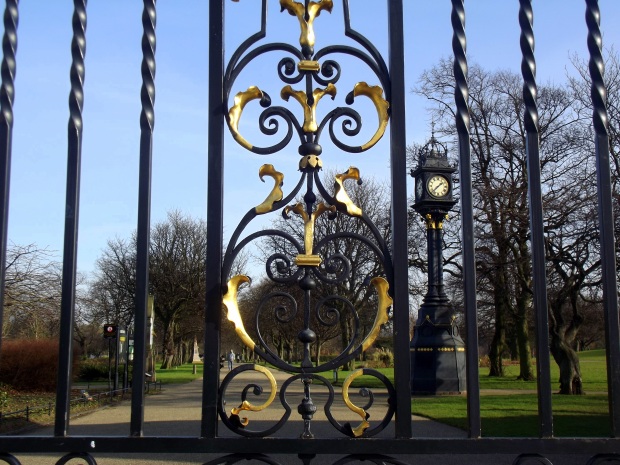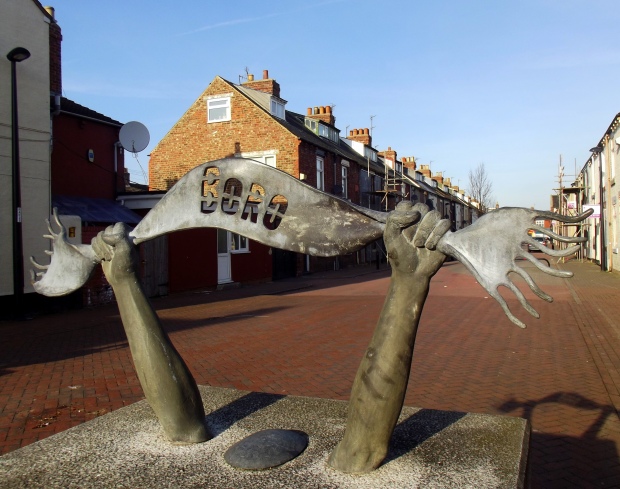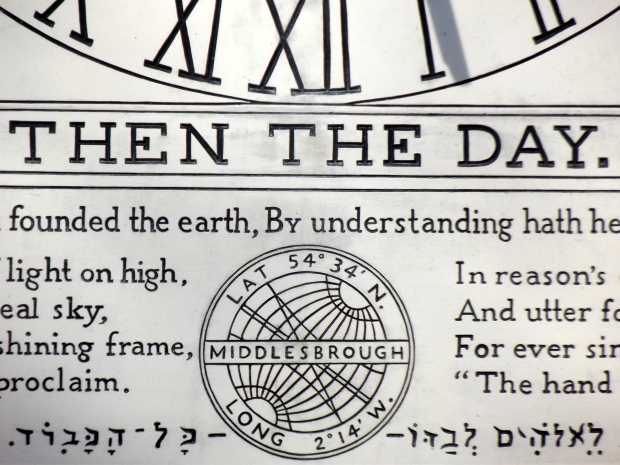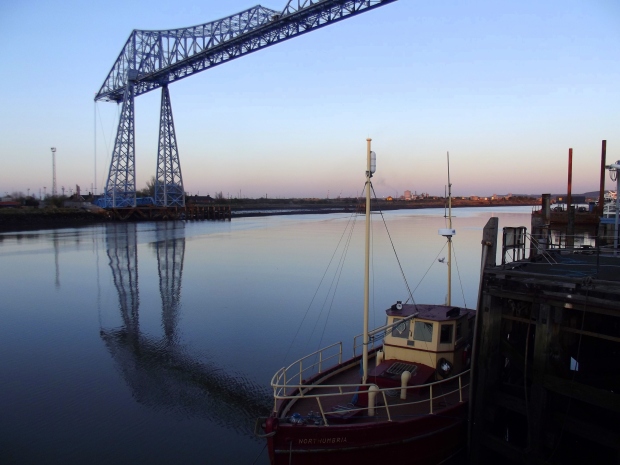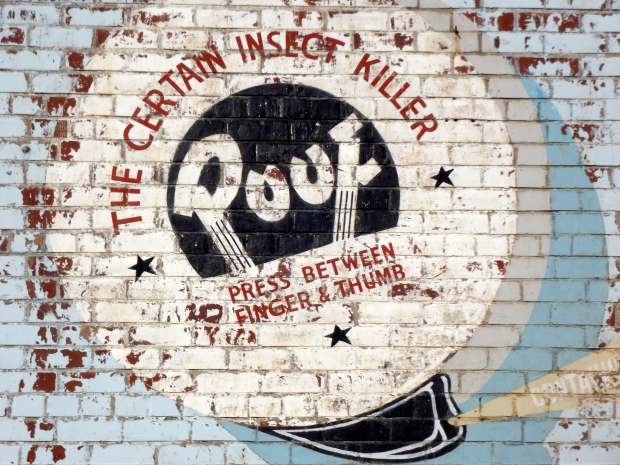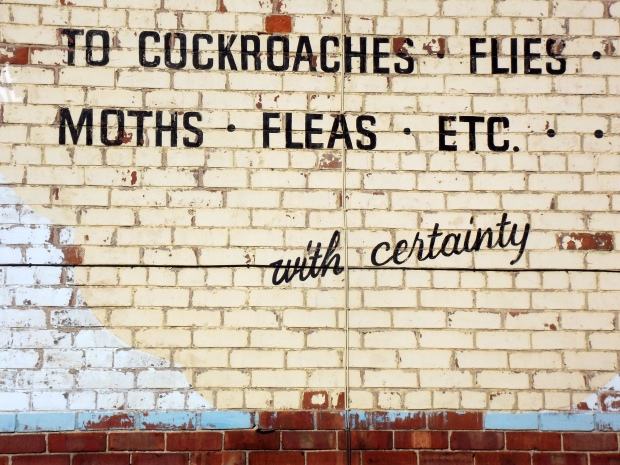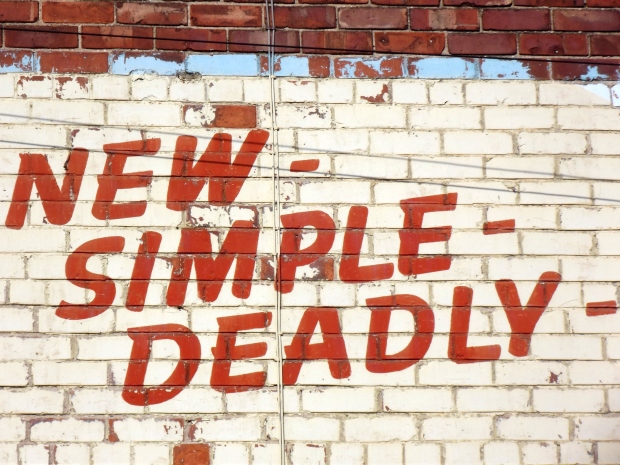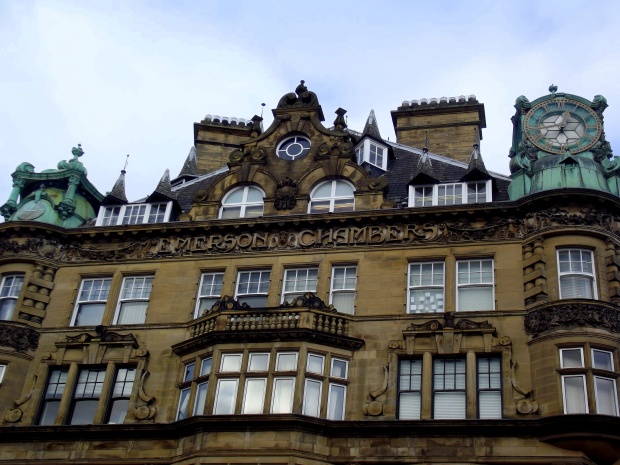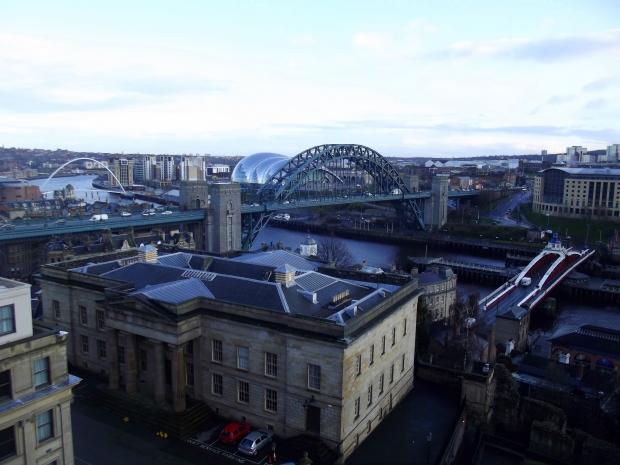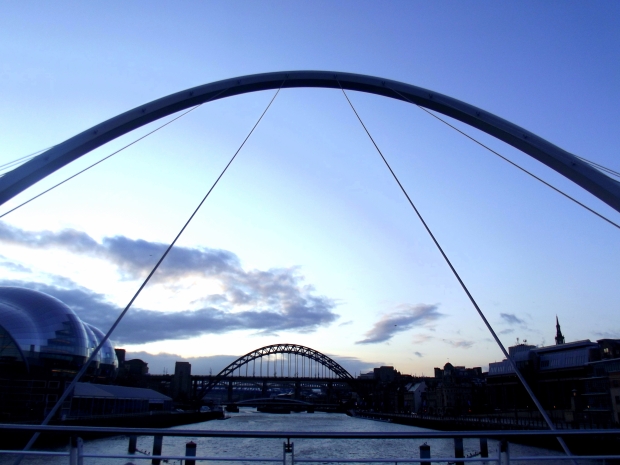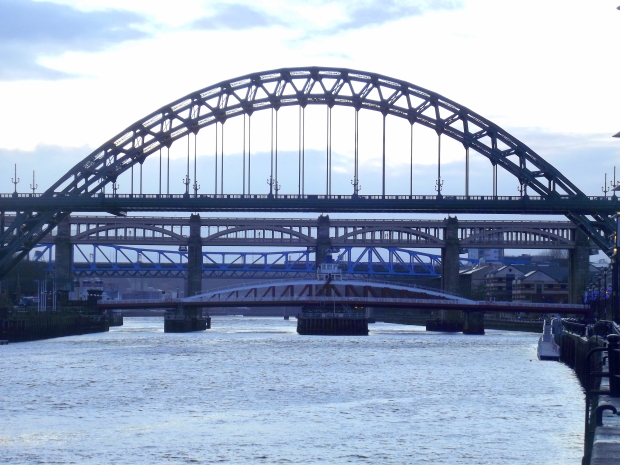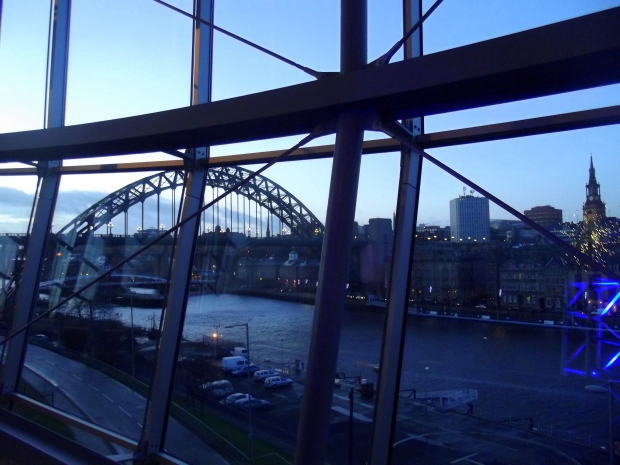
When up in Newcastle for a wedding a couple of weeks ago, we stayed pretty much next door to the Gateshead Millennium Bridge on the Gateshead side of the Tyne. It’s the world’s only ’tilting bridge’ and as we were on our way to the wedding it began to tilt. Naturally, I had my camera out like a flash.
]]>
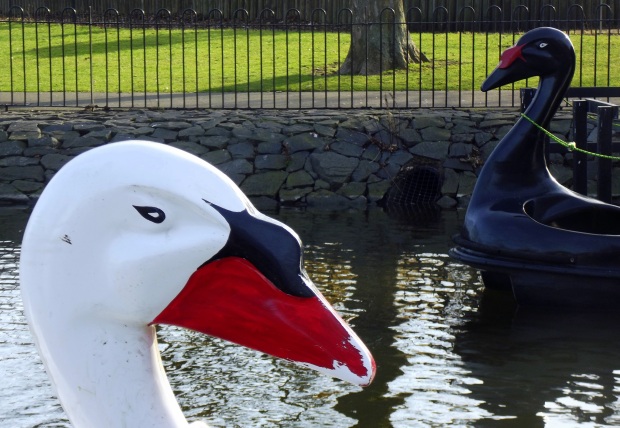 Today I went on a psychogeographical wander around Middlesbrough for a chapter in a book I’m working on. I’m not ready to release details yet but towards the end of the year all will be revealed. In this post are several photographs I took on my travels, the relevance of swan-shaped pedalos will not be lost on Iain Sinclair fans – if you haven’t already watched Swandown, I recommend it.
Today I went on a psychogeographical wander around Middlesbrough for a chapter in a book I’m working on. I’m not ready to release details yet but towards the end of the year all will be revealed. In this post are several photographs I took on my travels, the relevance of swan-shaped pedalos will not be lost on Iain Sinclair fans – if you haven’t already watched Swandown, I recommend it.
]]>

Although my next book is about London ghost signs I seem to be developing some kind of spider sense when I go anywhere else, as I stumbled across a range of ghost signs today in Middlesbrough. This one was by far my favourite and definitely deserves a post of its own. It’s in remarkably good condition.
]]>
Yesterday, as anyone who follows me on Twitter will be aware, I went out to Newcastle for the day. I have photographed the Tyne before but with its many bridges and striking architecture it’s the kind of place that can be photographed again and again in different lights and seasons.
Gratefully yesterday I had @SteveJames_Igor in tow, a Newcastle native who was able to give me insider tips on where to get the best shots. He also gave me a lot of cheek but being raised in the North I held my own all right.
]]>
The Transporter Bridge through the window of the old Iron Foundry.
Although I was brought up in North Yorkshire I had almost finished my less-than-sober stint at the University of Teesside before first venturing ‘over the border’. My Grandad had always warned me not to go there on nights out, which I deemed somewhat hypocritical given that he had once himself lived there and that my own dad had been born there.
The ‘border’, for those of you who are interested, is a boundary between jostling life and flat desolation signified by the railway line at Middlesbrough train station. On one side you have a relatively lively, albeit greying, town centre complete with all the things you’d pretty much expect: office blocks, a Walk About and a town hall playing the likes of Joe McElderry. On the other side however, well the moment you pass under the railway bridge you immediately understand why old-school residents are hesitant about going there.

A poem called ‘Ironopolis’ written by North East poet Ian Horn about The Tees Transporter Bridge. The full text reads: Where alchemists / Were born / Below Cleveland’s hills / A giant blue dragonfly / Across the Tees / Reminds us every night / We built the world, / Every metropolis / Came from Ironopolis.
The first thing you notice is the quietude. There’re no murmuring cars, no bus breaks softly squealing, there aren’t even any rowdy men hanging out of pub doorways. Nobody is here; nobody comes here – except the odd white van man dropping off industrial supplies. The land is barren, the emptiness punctuated only by a peeling roadside cafe, a forgotten community building, the Middlesbrough FC football grounds and the blue, angular dazzle that is the Tees Transporter Bridge which this year, come October, celebrates its centenary.
It’s difficult to put into words how much I love this bridge. It is steeped in personal memory and its design boasts of all of the geometric lines that make admirable architecture, but I’m not alone in my adoration. The bridge is important to most people of the North East not just because of its longevity and beauty but because of its resilience. In the hundred years that it has journeyed passengers back and forth across the river Tees between the Boro and Port Clarence it has rarely paused for rest. Occasionally extremely thick fog over the river interrupts the service, but never for very long. As Middlesbrough is historically an industrial town the bridge has also been bombed twice. Once in the First World War by a German Zeppelin and by an enemy plane during World War II. A further threat came in 2002 when the bridge was nearly dismantled and sold to the USA…oh no, wait that was just a plotline in series 3 of Auf Wiedersehen Pet. ITV had some very worried phone calls from the North East that week I can tell you.
The first thing anyone is likely to notice on visiting the Transporter Bridge is how much love the people who work on it have for it. On arrival one of the operators gleefully showed me around the old motor room explaining several somewhat alarming facts about the bridge’s history and construction. Firstly the old motors were only replaced by computerised versions last year. For 98 years then, the old cogs, screws and cables had kept the bridge in operation. Although according to the operator in question, the old motors were still perfectly workable even after all this time, the odds of being lethally electrocuted had been significantly reduced by the upgrade – which is nice. He further explained that before the improvements the bridge hadn’t had any breaks requiring a bit of savvy speed control from the driver.
Next to arrive on scene was the bridge manager who was to conduct a pre-booked tour along the top of the bridge for myself and my better half. Looking up at the labyrinthine blue pipes, step ladders and struts I suddenly became aware of the fact that the bridge was quite high, a fact that hadn’t occurred to me in the excitement of booking the tour, 225 feet high to be exact. Our tour guides, used to the height, were quite blasé about the climb but as a layperson let me tell you: most rollercoasters don’t take you that high. Even ‘The Big One’ at Blackpool Pleasure Beach only measures in at 213 feet. Mecifully the viewing platform is only 160 feet up and let me assure you this is high enough; once I’d stabilised my high anxiety the views across the Tees Valley were breathtaking. There is something uniquely diverting about the desolate stretches of abandoned land where the Iron Foundry once stood. The now empty heart of Ironopolis stretches; clings outwards into a haze of smoky chimneys that onceover inspired the fire and blaze of the Blade Runner cityscape.
The bridge was originally built to serve the 4000 workmen employed in the Port Clarence area in the early 1900s. Most of these workmen lived in Middlesbrough and consequently had to cross the river at least twice a day. There was a ferry service in place but given that it only held 700 passengers it was deemed inadequate for the demand: crossing the river took 15 minutes and boarding took five. Given these figures a person could wait up to 2 hours to get to the other side of the bank. A Transporter Bridge was first suggested as a solution in 1901 by Ald. McLaughlin but, due to a lot of floundering by the Town clerks and council, it took another decade to get the project approved and the bridge built with the contract for the bridge finally being awarded to Sir William Arrols Co Ltd of Glasgow. The Transporter’s staggering steel structure gave Middlesbrough a name both for bridge-building and for steel works and the iron and steel industries consequently provided a great many jobs to people of the region up until the last ten years or so.
One of the many stories about this bridge relayed to me during my visit was one of traditional North-Eastern frugalism: the workmen found a way around paying the half-penny toll for crossing via the bridge’s platform by climbing 160 feet up the steps along the walkway and down the other side. They did this twice a day usually with a bicycle in tow. Being from the area I wasn’t surprised by this but it did make me smile. Don’t spend on transport what you might spend on beer, I say.
Back in February when I stood atop of the bridge, hugging myself for warmth, their governing committee had just applied, after a good few years of rejection, for a Lottery grant which has since been awarded to them. Although this is excellent news for the bridge it is also a long overdue investment; other projects in the area have received financial support whilst the Transporter Bridge has remained largely overlooked. In 2008, for example, the Tees Valley Giants initiative announced that it would be creating five art sculptures across the region named, unsurprisingly, “The Tees Valley Giants.” Ironopolis, however, became Monstropolis when the Middlesbrough sculpture: Temenos was constructed on the river’s edge between the Riverside Football Stadium and the Tees Transporter. The structure, a modern art atrocity in the eyes of many, cost £2.7 million to build and for the last two years the bridge’s workers have had no choice but to look down on it knowing what they could have done with that money. Sadly, those particular funds were only available for arts projects due to the fact that The Arts Council were one of the major sponsors.
The £2.6 million worth of lottery money is going to go towards installing lifts so people don’t have to endure an epic climb in order to experience the dramatically contrasting views across the Tees. I am personally hoping for some glass affairs that Willy Wonka himself would be proud of. They’re also going to carry out some pretty essential maintenance work and restore the gondola (the platform that moves between the banks) on what is actually a Grade II listed building. Once the bridge is more accessible, who knows? Middlesbrough authorities might do something radical like grass over the chasm of concrete that hems the river and actually create a place that people want to come to. An area where residents and visitors can stretch out on lazy days and let the river flow by whilst the bridge ferries people back and forth, silently serving its native city, as it has done splendidly for the last hundred years.
]]>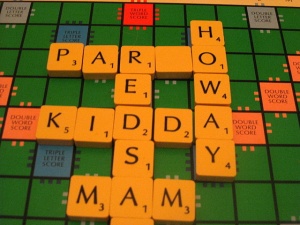 The majority of people I know view the smoky haze of Middlesbrough with deep disdain. Probably because these days the majority of people I meet are Southerners. They diss Middlesbrough based on whatever snippets they’ve gleaned from the national news over the years but most of them have never been there. Consequently I’m kind of confused about why they feel they are entitled to an opinion on the subject. This down-at-heel, ready-to-peel working class town has a very special place in my heart. It’s not just because my parents come from there or the fact that I enjoyed three drunkenly productive years there at the University of Teesside. There are just so many things about being in the Boro that are homely, quirkly and truly individual (my three favourite qualities in pretty much anything life has to offer). Need proof? Here are my top 5 reasons to ‘Up the Boro!’
The majority of people I know view the smoky haze of Middlesbrough with deep disdain. Probably because these days the majority of people I meet are Southerners. They diss Middlesbrough based on whatever snippets they’ve gleaned from the national news over the years but most of them have never been there. Consequently I’m kind of confused about why they feel they are entitled to an opinion on the subject. This down-at-heel, ready-to-peel working class town has a very special place in my heart. It’s not just because my parents come from there or the fact that I enjoyed three drunkenly productive years there at the University of Teesside. There are just so many things about being in the Boro that are homely, quirkly and truly individual (my three favourite qualities in pretty much anything life has to offer). Need proof? Here are my top 5 reasons to ‘Up the Boro!’
Reason Number 1: Dialect. When I go back up north there are few things I love better than sitting in a cafe, listening to the words I never hear said in London. Older family members refer to their younger counterparts as ‘kidda,’ they order their bacon sandwich with red sauce, never ketchup, and when it’s time to leave they say “howay then.’ It may be a little bit over the heads of anybody South of York but to me it’s a comforting reminder that I’m home.
Reason Number 2: Inspirational Industry. I have to admit that there is something about old factories and tall-standing chimneys that is sadly poetic to me. Maybe it’s a result of being raised in the ‘gritty North East’ but even if this is a bit weird I can take heart in the fact that I’m not alone. Ridley Scott, a fellow North Easterner, looked upon the smoke-stacked skyline of Teesside on his route back from Redcar one night and imagined it as a strange, futuristic world that later became the backdrop for his film ‘Blade Runner.’ Claims to fame don’t come much cooler than that.
Reason Number 3: Abstract Cuisine. Southerners like their pesto and their parmesan shavings but we Northerners find this all a bit orthodox. We’d much rather rock up to a take-away and order ourselves a Chicken Parmesan or a ‘Parmo’ as it is locally known: a rather inspired combination of breadcrumbed chicken topped with a thickened Bechamel sauce with a side order of chips. And whilst we’re on the subject of chips you have no idea what a relief it is to be able to order chips and gravy up there without inducing a vacant glare from the counter staff. Chips and gravy seems to have bypassed Southerners who, startlingly, seem to prefer curry sauce (ew!). It’s fair to say we do not have the most linear of culinary tastes (scream if you love crisp sandwiches) but conventional cuisine just isn’t as much fun.
Reason Number 4: The Transporter Bridge. Bridges fascinate me as architectural structures but I know of few others in the world that are as 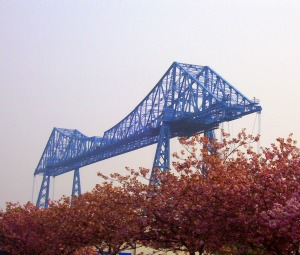 pleasing to my eyes as The Tees Transporter. This little geometric beauty was officially opened in 1911 and has ever since been emblematic of Teesside identity. The old girl’s had a few knocks over the years, including the numerous bombings of World War Two, but like the hardiest of Middlesbrough folk she’s taken it all on her steely chin and still stands proud in her blue shroud for drunken student and down-and-out-dole-boy alike to marvel at. Isn’t she a doll?
pleasing to my eyes as The Tees Transporter. This little geometric beauty was officially opened in 1911 and has ever since been emblematic of Teesside identity. The old girl’s had a few knocks over the years, including the numerous bombings of World War Two, but like the hardiest of Middlesbrough folk she’s taken it all on her steely chin and still stands proud in her blue shroud for drunken student and down-and-out-dole-boy alike to marvel at. Isn’t she a doll?
Reason Number 5: Arts and Culture. Yes I know. Not particularly the first two words that spring to mind when you say the name ‘Middlesbrough’ but times they are a changing with the introduction of MIMA (Middlesbrough Institute of Modern Art). In addition to housing collections by some of the most revered modern artists MIMA arrange regular film screenings, offer life drawing classes and host an adorable Valentine’s event called ‘Love Match’ which I’m more than a little bit gutted I won’t make it to. In short: The Tate Modern and the BFI better watch out. Looks like they’ve got competition.
]]>